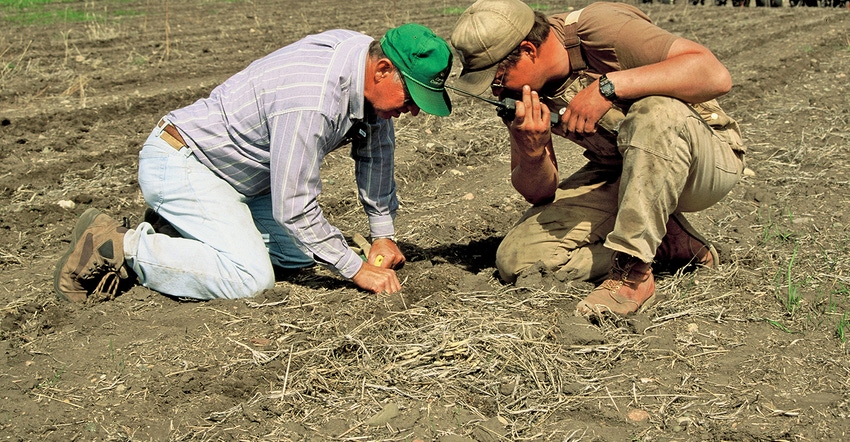February 27, 2017

By Kaelin Kyllo
There are certain mistakes made in life that can be compensated for: Overcook a hamburger? Just add a little extra cheese or ketchup! Stayed up too late watching a movie? Sneak in an extra cup of coffee or a nap the next day. When planting corn, however, there are a few mistakes that cannot be compensated for once they are committed.
Planting when soil is too wet
In my opinion, planting when the soil is too wet is the most common mistake made in our region. While it’s true that sometimes farmers can’t help but plant in wet soil because of adverse weather or because it is late in the season, doing so can have a severe effect on yield.
The main problem with planting when the soil is too wet happens when a compacted layer forms around the seed. This can restrict root development and fertility uptake later in the plant’s life.
Another issue that can arise when planting in heavily saturated ground is a seed trench that remains open. This can cause poor seed-to-soil contact, which in turn causes poor emergence.
I’ve seen yield losses of up to 25% from planting on soil that is too wet, which is why I would consider this the most important mistake to avoid.
Planting too deep or too shallow
Over the past few years, springs in the Red River Valley have been drier than average. The lack of moisture has caused some farmers to plant their corn deeper than normal (in some cases up to 3 inches deep) to get the seed into wet ground.
History has shown us that with prairie soil types and cooler climate, we should never plant corn deeper than 2 inches. It takes extra time for the soil to warm up when at depths of 2 inches or more. Cool soil mixed with a rain after planting can cause serious germination issues that can lead to uneven emergence.
That being said, I caution farmers from planting any shallower than 1½-inches deep, as well. Corn planted too shallow can lead to poor root development, which can develop into more serious issues later in the growing season, such as lodging and poor late-season health.
Planting too fast
While performing stand evaluations in the last few years, I’ve noticed that the nicest stands come from careful seedbed preparation, when the farmer planted only as fast as the planter allowed. This can differ for many farmers depending on their specific planter setup, but I have noticed that the planters that go no more than 5 mph have the most even stands throughout their fields.
During the growing season, the goal is to have every plant emerge as close to the same time as possible. To achieve that goal, make sure that row units are not bouncing along because of high speeds. It can cause uneven seeding depth.
Avoiding these three mistakes could mean the difference between a below- or above-average crop. Setting yourself up for success by following a few key rules at the start of the growing season will help ensure a smooth and high-bushel harvest at the end of the year.
Kyllo, Hunter, N.D., is a Certified Crop Adviser and a sales agronomist with Peterson Farms Seed. Contact him at 866-481-7333 or [email protected] and see http://petersonfarmsseed.com/blog.
You May Also Like




